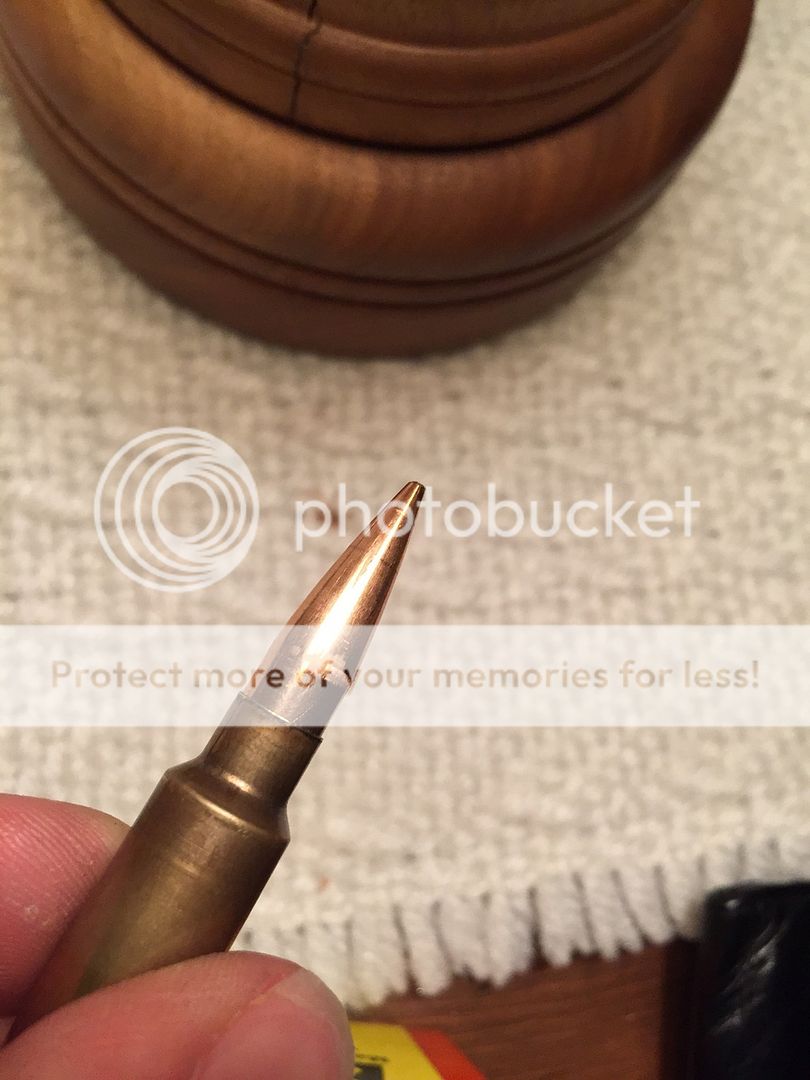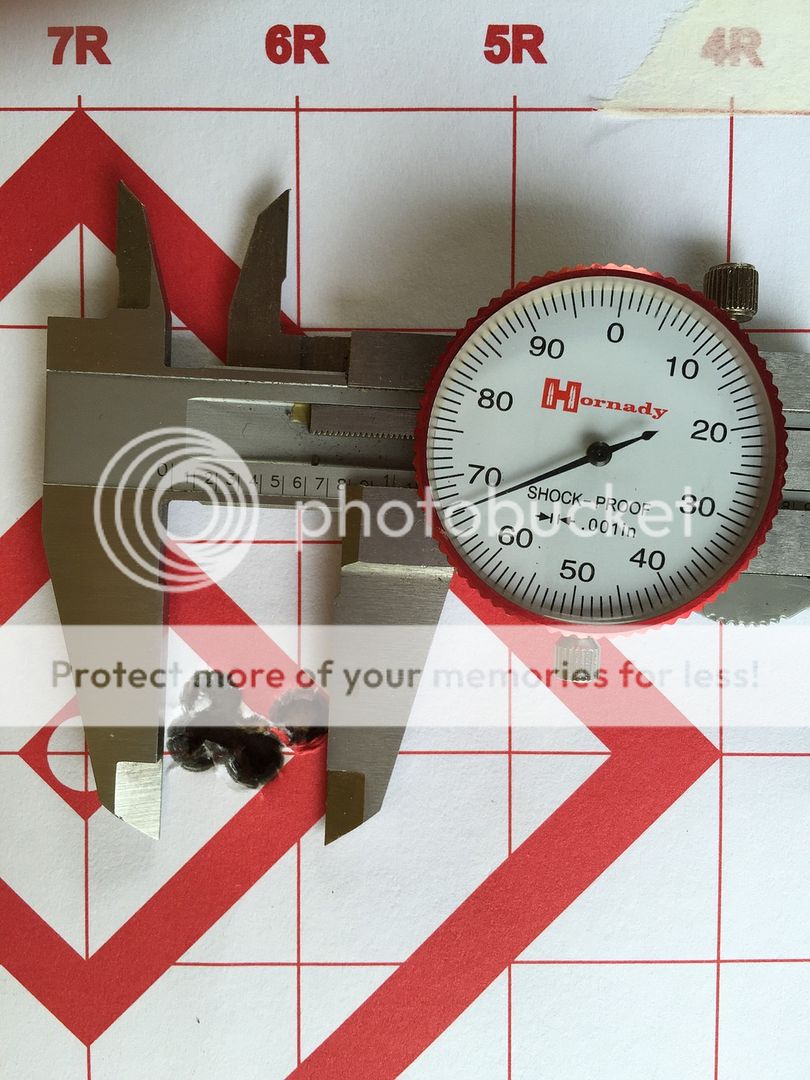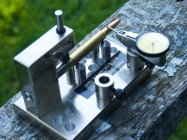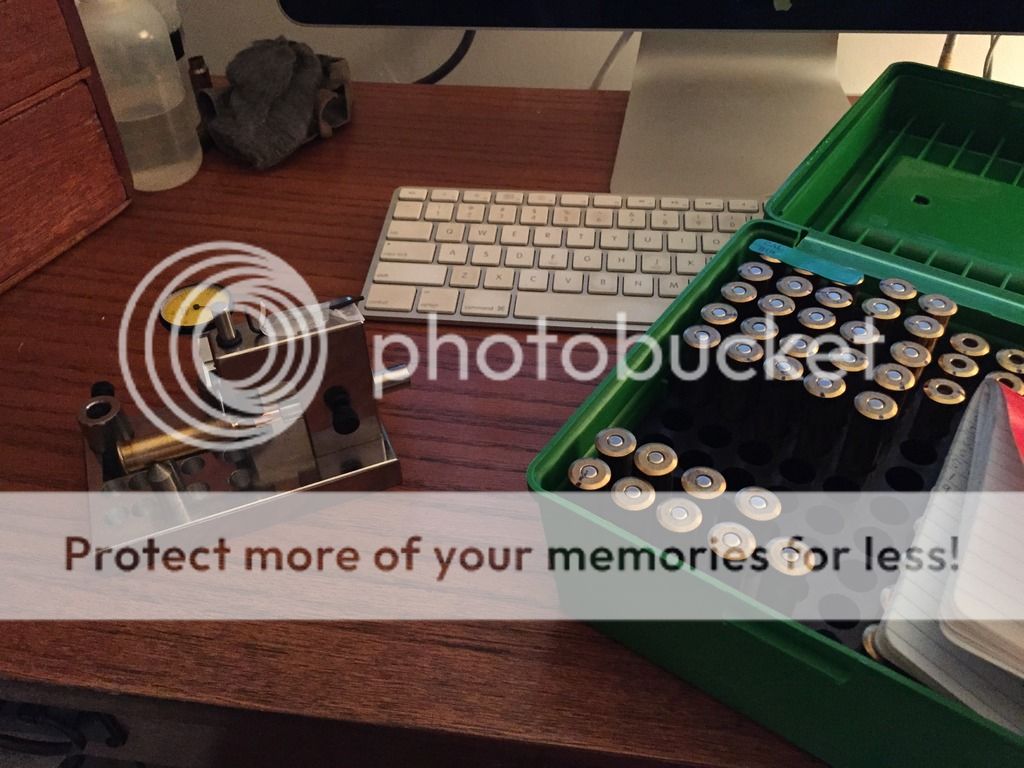Grimstod
Machinist, Designer, and Shooter.
Does runout matter when you are using a tight necked chamber? Yes it does.
So I started my first wildcat ever and at first I used some Lee dies. They were terrible though. Sometimes runout was so bad I could see it with the naked eye. Tried chucking them up in a lathe and truing them up and that did help a little but still runout was almost consistently .010 or more. Groups were bad to. Best I could manage was .77moa and that was the only group I ever shot that was small, the rest were embarrassing. Something else I noticed was that when there was a lot o runout, the bolt would close really hard because the chamber had to essentially straighten it to get it in. Not a very good feeling for your confidence levels. I chambered a few and the removed them, and sure enough there were lots of deep scratches on one side of the bullet as it was jammed into the chamber crooked.
Next I purchased some much nicer Redding dies. Runout was way less. Like .002 in the worst cases. Groups shrank a lot. Now down to .411 consistently. I was able to shoot two five shot groups in a row that measured that small. For me that is great considering I am working of a military action and not a modern custom rig.
So my conclusion is that runout does in fact matter. If your jamming in crooked bullet don't expect match winning results.
Next I got one of these fli-right concentricity gauges from http://premieraccuracy.com/video-2015.html. There is a lot about this gauge that I like. I will try to do a video of myself using it soon. What I love about it is that it does not ruin neck tension because you shock it rather then bend the neck. Using it is really easy to. Even though the new Redding dies put out some great results, every once in a while you get a bad on, and instead of having a flyer to ruin a good group I can now detect them and even fix them.
https://www.youtube.com/watch?v=VFTya86Ax18
https://www.youtube.com/watch?v=lv72gRX0XBM









So I started my first wildcat ever and at first I used some Lee dies. They were terrible though. Sometimes runout was so bad I could see it with the naked eye. Tried chucking them up in a lathe and truing them up and that did help a little but still runout was almost consistently .010 or more. Groups were bad to. Best I could manage was .77moa and that was the only group I ever shot that was small, the rest were embarrassing. Something else I noticed was that when there was a lot o runout, the bolt would close really hard because the chamber had to essentially straighten it to get it in. Not a very good feeling for your confidence levels. I chambered a few and the removed them, and sure enough there were lots of deep scratches on one side of the bullet as it was jammed into the chamber crooked.
Next I purchased some much nicer Redding dies. Runout was way less. Like .002 in the worst cases. Groups shrank a lot. Now down to .411 consistently. I was able to shoot two five shot groups in a row that measured that small. For me that is great considering I am working of a military action and not a modern custom rig.
So my conclusion is that runout does in fact matter. If your jamming in crooked bullet don't expect match winning results.
Next I got one of these fli-right concentricity gauges from http://premieraccuracy.com/video-2015.html. There is a lot about this gauge that I like. I will try to do a video of myself using it soon. What I love about it is that it does not ruin neck tension because you shock it rather then bend the neck. Using it is really easy to. Even though the new Redding dies put out some great results, every once in a while you get a bad on, and instead of having a flyer to ruin a good group I can now detect them and even fix them.
https://www.youtube.com/watch?v=VFTya86Ax18
https://www.youtube.com/watch?v=lv72gRX0XBM

























